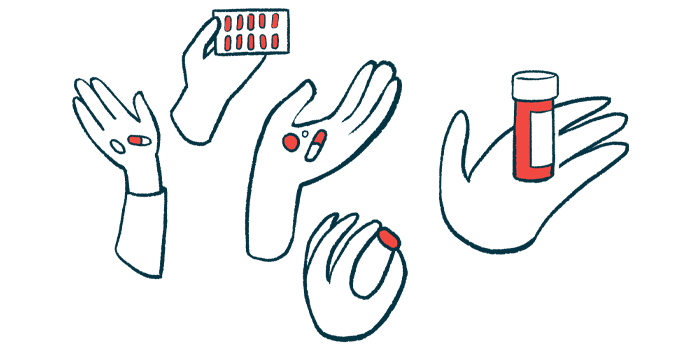Poor adherence to Nourianz linked to anxiety, mood changes
Fewer patients who soon stopped adhering took other Parkinson's prescriptions
Written by |

People with Parkinson’s disease who don’t always take Nourianz (istradefylline) as prescribed are more likely to have fewer prescriptions for other approved medications and to have anxiety, mood changes, or cognitive problems, a study finds.
Understanding how well patients follow the instructions for taking Nourianz, such as how often it should be taken and at what dose, can help doctors identify those who may need more support or benefit from targeted intervention, wrote the researchers.
The study, “Adherence to istradefylline in patients with Parkinson’s disease: A group-based trajectory analysis,” was published in the Journal of the Neurological Sciences by researchers in Japan and funded by Kyowa Kirin, which markets Nourianz in the U.S.
Off episodes in Parkinson’s refer to times when the effects of levodopa, the disease’s gold standard treatment, wear off and motor symptoms return. These episodes typically occur toward the end of the interval between doses.
Nourianz is approved as an add-on treatment for off episodes. It blocks adenosine A2A receptors and the activity of adenosine, a signaling chemical that limits movement, to help control motor symptoms when levodopa wears off.
High, low adherence to Nourianz
Here, researchers drew on data from 2,088 people with Parkinson’s from a Japanese hospital database, median age 74, to check how well they adhered to Nourianz over nearly a year.
Four distinct patterns emerged. More than half (56.8%) the patients maintained a consistently high adherence to treatment, meaning they nearly always took Nourianz at a dose of either 20 or 40 mg once daily, as prescribed. The remaining patients either quickly stopped following their prescription (25.8%), slowly stopped following it over time (8.5%), or initially stopped following their prescription, but later adhered to it again (9%).
Compared with patients with consistently high adherence, fewer of those who were quick to stop adhering to their prescribed treatment were on dopamine agonists (63.8% vs. 69.4%), MAO-B inhibitors (26.8% vs. 31.6%), or COMT inhibitors (31.6% vs. 37.0%).
The patients who gradually stopped following their prescription took fewer MAO-B inhibitors (22.5% vs. 31.6%) or amantadine, a medication used to control levodopa-induced dyskinesia, or sudden, uncontrolled movements that occur as a side effect of the therapy (8.4% vs. 16.1%).
Anxiety or mood changes, which are common nonmotor symptoms of Parkinson’s, were more common in those who either quickly stopped following their prescription (29.9%) or stopped but later adhered to it (34.2%) than in those with consistently high adherence (24.6%).
Those who gradually stopped following their prescription more often showed mild cognitive impairment or dementia than those with consistently high adherence (27% vs. 18.8%).
Taking fewer other medications, anxiety or mood changes, and mild cognitive impairment or dementia appeared to be associated with the probability of continuing Nourianz treatment, the researchers said.
“More than half of the patients belonged to a pattern of consistently high adherence during the first year of treatment. For the other three patterns, in which adherence was suboptimal, targeted interventions to improve adherence may be helpful,” they said.






